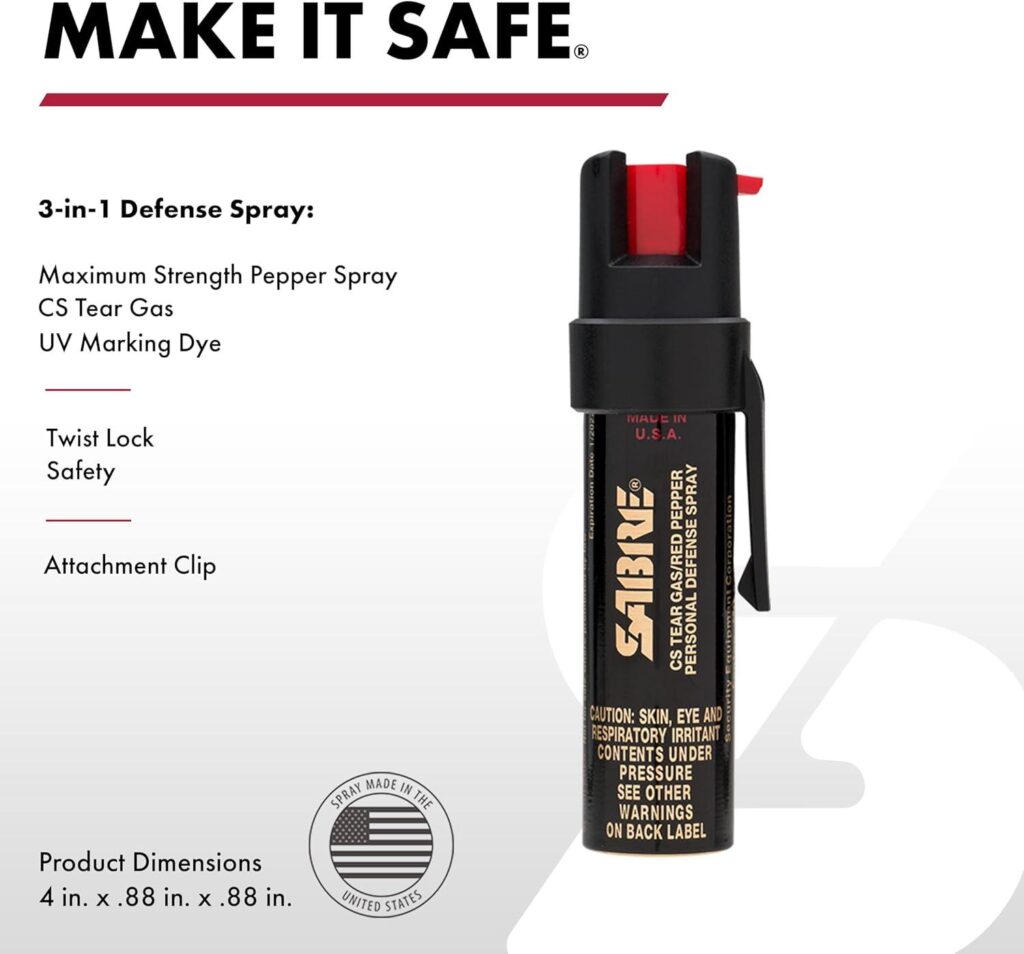Table of Contents
- NY Implements Strict Capsaicinoid Limit to Enhance Pepper Spray Safety
- Impact of the New Capsaicinoid Cap on Law Enforcement and Civilian Use
- Scientific Basis Behind Setting the Maximum Capsaicinoid Concentration
- Guidelines for Manufacturers and Distributors to Comply with the New Regulation
- Final Thoughts
NY Implements Strict Capsaicinoid Limit to Enhance Pepper Spray Safety
In an effort to bolster public safety and regulate the use of pepper spray, New York has set a firm cap on the active ingredient capsaicinoids at 1.33%. This regulatory measure aims to balance effective self-defense capabilities while minimizing the risk of excessive harm or misuse associated with overly potent sprays. Lawmakers emphasized that this limit aligns New York with some of the strictest standards nationwide, ensuring that pepper spray products remain a practical and safe option for civilian use.
The new standard imposes clear guidelines for manufacturers and distributors, requiring rigorous compliance checks and labeling transparency. Key points of the regulation include:
- Mandatory testing of each batch to verify capsaicinoid concentration
- Enforcement of penalties for non-compliance ranging from fines to product recalls
- Public awareness campaigns to educate on safe handling and proper usage
As a result, consumers can expect a more reliable and safer product, while law enforcement supports the reduction of incidents involving excessive chemical exposure. These changes reflect New York’s commitment to responsible self-defense products that prioritize safety without compromising effectiveness.
Impact of the New Capsaicinoid Cap on Law Enforcement and Civilian Use
The introduction of a maximum capsaicinoid concentration of 1.33% in pepper spray significantly alters how law enforcement agencies can deploy this non-lethal tool. Agencies will need to carefully reformulate their sprays to comply with the new legal threshold, potentially adjusting training protocols to ensure effective incapacitation within the new limitations. This adjustment aims to balance efficacy with safety, reducing the risk of excessive harm while maintaining control during encounters. Additionally, departments may face budgetary considerations as manufacturers recalibrate production to meet the mandated standard.
For civilians, the regulation introduces greater consistency and safety in commercially available pepper sprays, providing reassurance that products on the market adhere to uniform potency guidelines. Key impacts include:
- Enhanced consumer protection through standardized active ingredient limits
- Potential reduction in adverse health effects from over-concentrated sprays
- Clearer guidelines for self-defense product purchasing decisions
- Legal clarity in possession and use regulations at the state level
Scientific Basis Behind Setting the Maximum Capsaicinoid Concentration
Extensive toxicological research underpins the 1.33% capsaicinoid limit established for pepper spray in New York. Capsaicinoids, primarily capsaicin, are the active components responsible for the irritant effects of pepper spray, inducing a strong inflammatory response on mucous membranes. Studies indicate that concentrations beyond this threshold markedly increase the risk of severe respiratory distress, prolonged eye injury, and potential cardiovascular distress, especially among vulnerable populations such as children, elderly individuals, and those with pre-existing health conditions. Authorities balanced the dual objectives of maintaining effective personal defense mechanisms while minimizing adverse health consequences.
The decision was also guided by pharmacological analyses and clinical data, which highlight several critical factors supporting the cap. These include:
- Rapid onset of incapacitation: Concentrations near 1.33% reliably elicit immediate sensory irritation and temporary incapacitation, enhancing law enforcement and civilian safety.
- Safety margin: The limit provides a buffer against unintended long-term tissue damage or systemic toxicity observed in higher doses.
- Standardization across products: Facilitates uniform regulatory oversight and ensuring public health protections without compromising defensive utility.
Guidelines for Manufacturers and Distributors to Comply with the New Regulation
Manufacturers and distributors must rigorously adjust their formulations to meet the new capsaicinoid concentration cap of 1.33%. This requires thorough reevaluation of chemical processes and raw material sourcing to ensure compliance without compromising the product effectiveness and safety standards. Comprehensive testing protocols should be implemented during production to verify that each batch adheres to the specified limit. Additionally, detailed documentation must accompany each shipment to facilitate transparent inspection and traceability.
To streamline compliance efforts, companies should consider adopting the following best practices:
- Regular training sessions for quality control teams on the updated regulation specifics.
- Upgrading laboratory equipment for precise capsaicinoid quantification.
- Engaging with legal experts to monitor any further regulatory changes.
- Enhancing communication channels with distributors to ensure proper product handling and representation.
Final Thoughts
In summary, New York’s decision to establish a maximum capsaicinoid concentration of 1.33% in pepper spray marks a significant regulatory step aimed at balancing public safety with effective self-defense measures. This limit seeks to standardize product potency, minimize the risk of excessive harm, and ensure law enforcement and civilian use adheres to clear safety standards. As this regulation takes effect, manufacturers and consumers alike will need to adjust to the new requirements, reflecting an ongoing effort to address concerns surrounding the use and impact of chemical deterrents in the state.Check Our Other Blogs
- StunGun – Your Trusted Source for Stun Guns, Laws, and Self-Defense Tips
- PepperSprayLaws – Your Trusted Resource for Pepper Spray Information
- StunGunLaws – Your Trusted Guide to Stun Gun Legality and Safety




